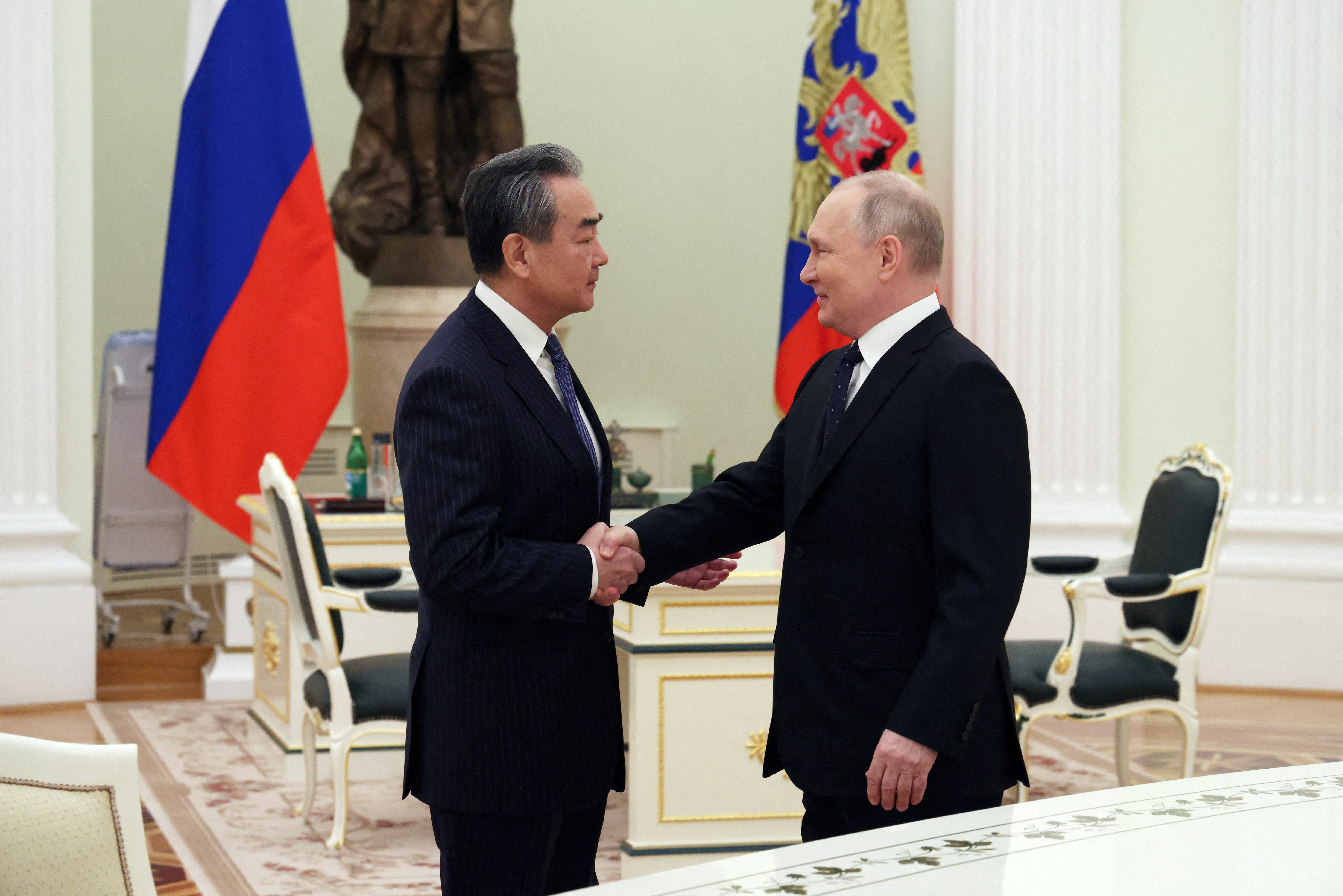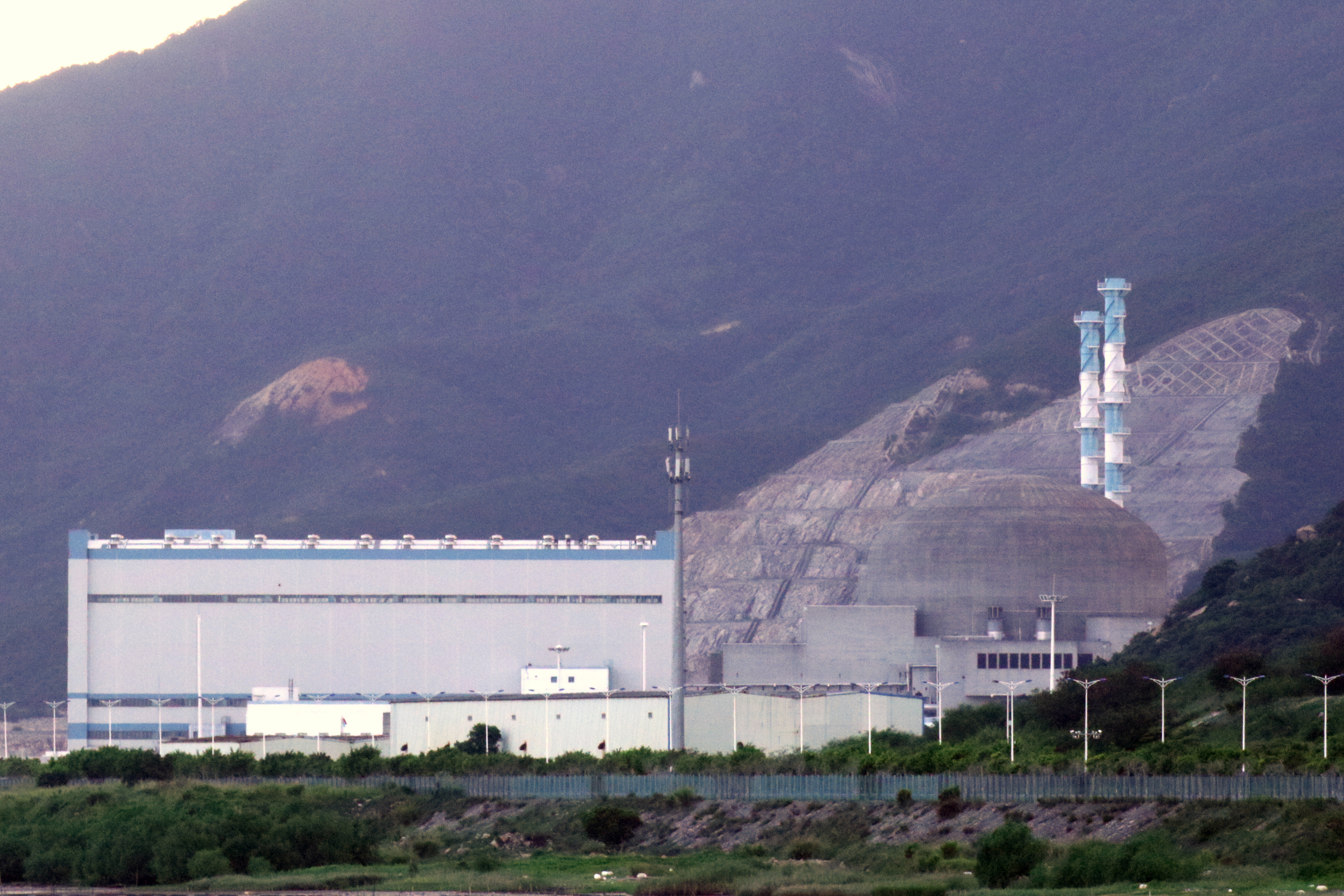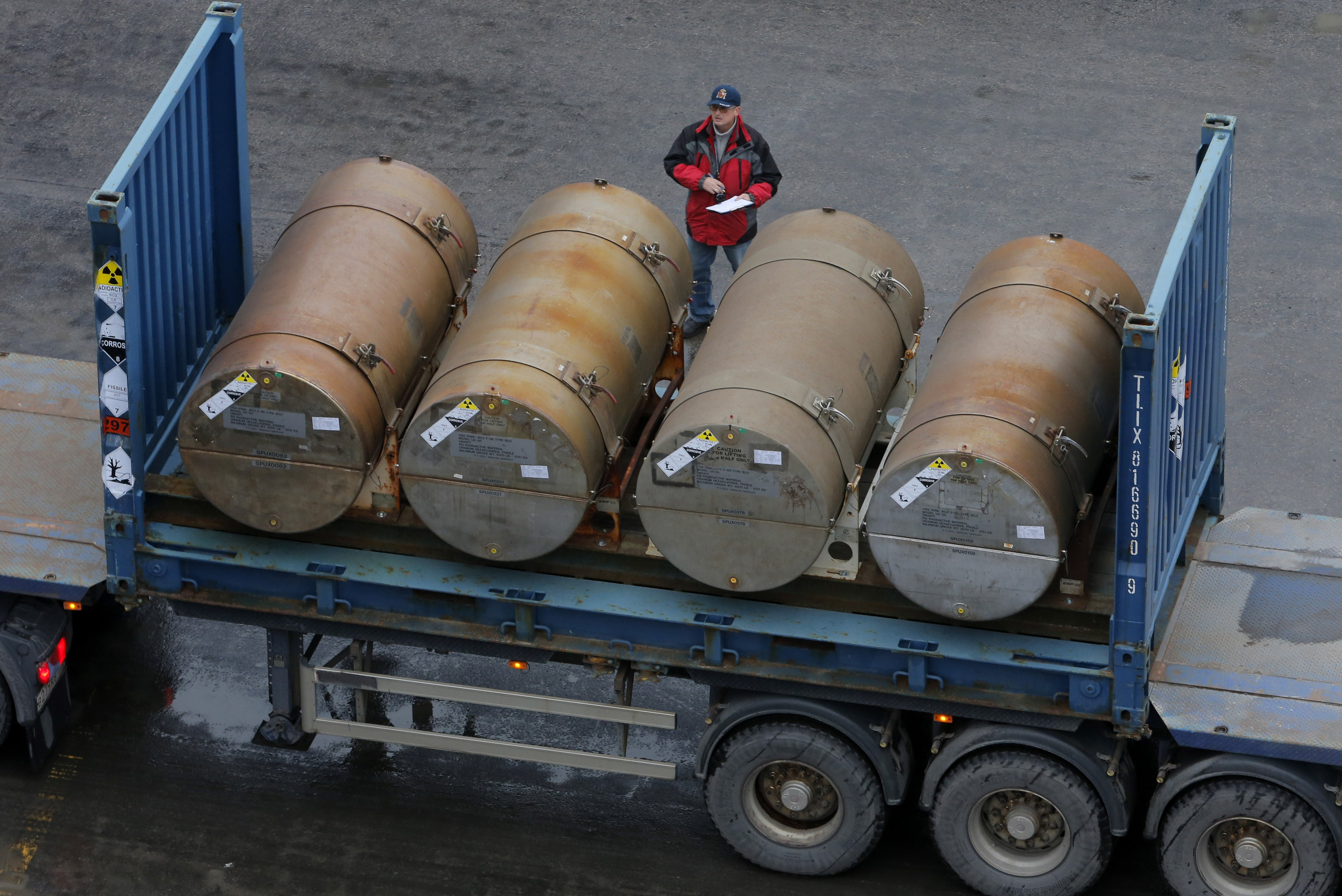
On the same day in December that Chinese and US diplomats said they had had constructive talks to reduce military tensions, Russian engineers were delivering a massive cargo of nuclear fuel to a remote island just 220 kilometers off Taiwan’s northern coast, according to a Bloomberg report.
China’s so-called fast breeder reactor on Changbiao Island is one of the world’s most attractive nuclear facilities. US intelligence officials predict that when the CFR-600 becomes operational this year, it will produce plutonium that could help Beijing quadruple its stockpile of warheads over the next 12 years. This would allow China to respond to the nuclear arsenals currently being developed by the US and Russia.
“It is possible that this program is purely political in nature,” Pavel Podvig, a nuclear analyst at the United Nations Geneva Institute for Disarmament Studies, told Bloomberg. “My concern is that China has stopped reporting its plutonium stockpiles. This is not conclusive evidence, but certainly a bad sign.”
China’s growing ability to expand its nuclear weapons comes as the last remaining treaty limiting U.S. and Russian strategic stockpiles is on the brink of collapse amid a standoff over the war in Ukraine. Russian President Vladimir Putin announced on February 21 that Russia was suspending its participation in the New START treaty, a decision that US President Joe Biden condemned as “a big mistake.”

During a December 30 teleconference, Putin told Chinese President Xi Jinping that defense and military-technical cooperation “occupies a special place” in their relationship.
“It is clear that China is benefiting from the support of Russia,” German arms control expert Hannah Note told Bloomberg. The risk for Beijing is that the US could expand its own arsenals in response to China’s buildup, as well as abandon the Kremlin’s arms control treaties, and “the gap widens again,” he said.
U.S. Department of Defense officials have repeatedly sounded the alarm about China’s nuclear ambitions since the release of the 2021 report to Congress. Military planners estimate that the CFR-600 will play a critical role in increasing China’s stockpile of warheads to 1,500 by 2035, up from today’s 400.
Pentagon officials say, according to Bloomberg, on Dec. 12, Russia’s state-owned Rosatom was fueling the nuclear program with 6,477 kilograms of uranium, which could destabilize the military balance in Asia, where tensions are rising over Taiwan and control of South Korea. Sea. Experts say Beijing has little money to increase its stockpile of plutonium for nuclear weapons after shutting down its original production program in the 1990s.
China rejects US concerns. China’s Foreign Ministry said China “strictly complied with its nuclear non-proliferation obligations” and voluntarily transferred “part of its civil nuclear activities” to the International Atomic Energy Agency. On Feb. 23, Defense Ministry spokesman Tang Kefei said the US has repeatedly cited “China’s nuclear threat” as a pretext to expand its strategic arsenal, while China has a no-first-use defense policy.
The protests in the US did not stop the China National Nuclear Corporation. from obtaining fuel from Rosatom for the CFR-600 reactor, which is based on a Russian project using liquid metal instead of water in moderate operation. Exclusive trade data showing details of the deal was provided to Bloomberg by the Royal United Services Institute (RUSI), a London-based think tank.
The expansion of nuclear cooperation between Russia and China is having a huge impact on nuclear nonproliferation efforts. Between September and December, RUSI data show that Russia exported almost seven times more highly enriched uranium for CFR-600 to China than all the material exported worldwide under the auspices of the US and the IAEA over the past three decades.
According to RUSI data obtained from a third-party trading supplier and based on data from Russian customs, China paid about $384 million in three tranches over this period for 25,000 kilograms of CFR-600 fuel from Rosatom.
Rosatom declined to comment. The project “will be the first large-capacity fast breeder nuclear power plant outside of Russia,” Rosatom’s TVEL Fuel Company said in a Dec. 28 statement confirming the delivery of the fuel, Bloomberg reported.

Highly enriched uranium, defined as the presence of uranium-235 isotopes that have been purified to greater than 20% purity, is a highly controlled metal that is produced or available in only a few countries. The higher the enrichment level, the greater the weapon usability, and eliminating the international trade in highly enriched uranium has been a central pillar of nonproliferation policy since the 1990s.
The CFR-600 is part of China’s ambitious $440 billion plan to overtake the US as the world’s largest supplier of nuclear power by the middle of the next decade. Unlike traditional reactors, it runs on a combination of highly enriched uranium and so-called mixed oxide fuel, which produces weapons-grade plutonium.
China is also building, Bloomberg reports, a desert plant in Gansu province designed to extract plutonium from CFR-600 spent fuel when completed two years later. Beijing has stopped voluntarily reporting plutonium stockpiles to the IAEA since 2017.
“Increased secrecy and vigorous diplomatic efforts against greater transparency have raised international suspicion,” said Tong Zhao, a visiting fellow in the Science and Global Security Program at Princeton University. “I don’t think we can rule out the possibility of a military application.”
A December high-level diplomatic meeting between top US and Chinese officials in Langfang, a city adjacent to the Chinese capital, was to set the stage for US Secretary of State Anthony Blinken’s first official visit as part of efforts to defuse tensions between the two world leaders. largest economies.
But tensions flared again after Blinken’s February trip was canceled in response to a suspected Chinese reconnaissance balloon in U.S. airspace that Biden ordered to be shot down by a military aircraft, according to Bloomberg. At the Munich Security Conference, senior Chinese diplomat Wang Yi called the US response “hysterical” and Blinken warned Beijing against supplying deadly weapons for Russia’s involvement in the war in Ukraine.
The danger now is that counterclaims between Beijing and Washington could take a nuclear turn once the CFR-600 goes live, allowing for the potential production of weapons-grade plutonium in the coming years.

In the past, China has limited itself to what it calls “minimum nuclear deterrence.” This ability was far inferior to the American one,” Russian arms control expert Alexei Arbatov said in a Feb. 6 commentary to the Kremlin-created Council on Foreign Affairs. “But now, apparently, the Chinese have decided to catch up with the United States (and, by definition, Russia) in terms of the number and quality of nuclear forces.”
Russia has become increasingly dependent on China as Putin’s years-long invasion of Ukraine triggered unprecedented international sanctions. China has shown that it has no intention of abandoning its staunch diplomatic partner against its common adversary, the US, even as Beijing is portrayed as a neutral participant in the war.
As part of a club of five official nuclear powers codified under the 1970 Nuclear Non-Proliferation Treaty, China and Russia are under no obligation to disclose details that could help verify whether CFR-600 is being used to boost its weapons stockpiles by Beijing. The video is not subject to mandatory IAEA monitoring, which requires the Pentagon and arms control analysts to make assumptions about its purpose.
Frank von Hippel, a physicist and former White House adviser, now a professor at Princeton University, estimates that the CFR-600 can produce up to 50 warheads per year once it enters service. “I expect CFR-600 enrichment to be less than 30%, but even then it will be a useful weapon,” he wrote in an emailed response to Bloomberg questions.
“It’s important for China to get technology and fuel” because there aren’t many places it can get plutonium, and Russia won’t mind if the heavy metal is used for nuclear weapons, said Alexander Gabuev, senior fellow at the Carnegie Endowment for International world. “What is bad for the US and could strengthen their competitors is now seen as good for Russia.”
Source: Bloomberg.
Source: Kathimerini
Anna White is a journalist at 247 News Reel, where she writes on world news and current events. She is known for her insightful analysis and compelling storytelling. Anna’s articles have been widely read and shared, earning her a reputation as a talented and respected journalist. She delivers in-depth and accurate understanding of the world’s most pressing issues.